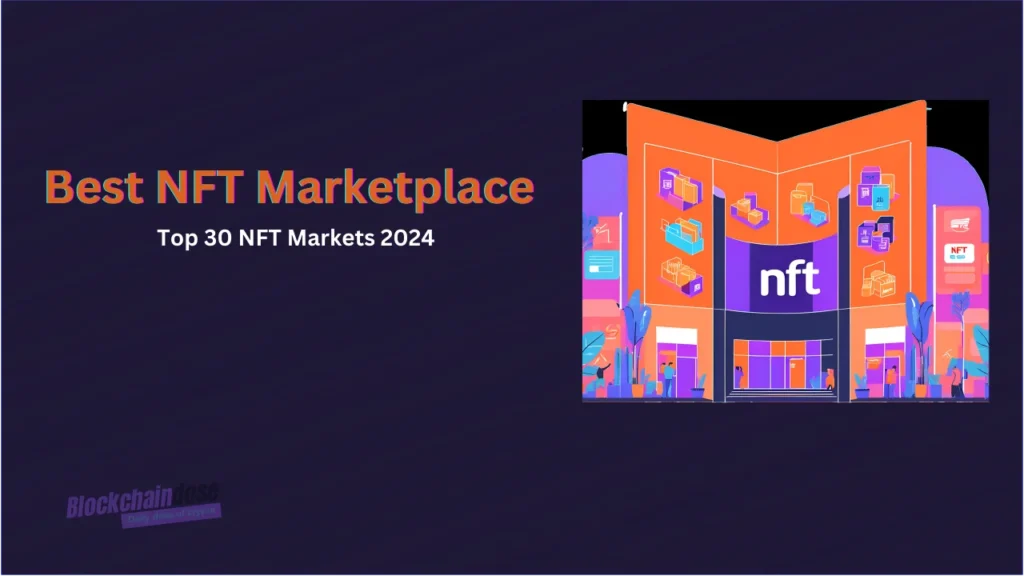Imagine you’re in a room with 100 people. Each person has a book. All these books have the same list of transactions. If you want to add something to this list, at least 51 of these people must agree. That’s a simple way to think of blockchain. Now, let’s dig deeper into this interesting world.
1. What is Blockchain?
At its heart, a blockchain is a digital ledger. Just like a checkbook where you write down what you earn and spend, a blockchain keeps a record. But it’s not about dollars. It’s about digital information.
Blockchain technology securely records transactions across multiple computers, ensuring transparency and immutability. Unlike centralized systems, which a single entity controls, blockchain operates on a decentralized network, making it resistant to tampering and fraud.
Key Points:
- Digital Ledger: A place to record digital info.
- Transparent: Everyone can see it.
- Secure: Hard to change or cheat.
2. Key Components of Blockchain
- Blocks: Each block contains a group of transactions. Miners in Proof of Work (PoW) systems and forgers in Proof of Stake (PoS) systems perform complex computations or validations to seal a block and add it to the chain once it reaches capacity.
- Decentralization: A network of nodes (computers) validates and records transactions on a blockchain. This eliminates the need for intermediaries, reducing the risk of central points of failure and fostering trust among participants.
- Cryptography: Complex mathematical algorithms secure the data within each block, ensuring that once a transaction is recorded, it cannot be altered or deleted. This cryptographic security is fundamental to blockchain’s immutability, providing confidence in data integrity.
- Consensus Mechanisms: These protocols ensure that all nodes in the network agree on the validity of a transaction before adding it to the ledger. Popular consensus mechanisms include Proof of Work (PoW) and Proof of Stake (PoS). PoW requires nodes to solve complex mathematical problems, while PoS selects validators based on their cryptocurrency holdings and willingness to “stake” as collateral.
Blockchain vs. Traditional Systems
| Aspect | Traditional Systems | Blockchain |
|---|---|---|
| Data Recording | Centralized databases, prone to single-point failures | Decentralized ledgers, data spread across many nodes |
| Transparency | Limited; requires intermediaries for audits | High; all participants can view transaction histories |
| Security | Vulnerable to hacks; centralized point of attack | Enhanced security due to cryptography & consensus model |
| Trust | Often dependent on third-party verification | Inherent trust; once data is added, hard to alter |
| Transaction Costs | Often involves fees due to intermediaries | Can reduce costs by eliminating middlemen |
| Speed | Can be slow due to third-party processing | Potentially faster, especially in peer-to-peer models |
| Accessibility | May require intermediaries or gatekeepers | Open to anyone with the required technology |
3. How Does Blockchain Work?
This can seem tricky, but let’s keep it simple.
- Blocks: Each block is like a page in a book. It has info about transactions.
- Chain: The blocks are linked together. Like pages in a book.
- Miners: These are the people who make sure the data is right. They solve puzzles to add blocks to the chain. And they get rewards for it.
4. The Famous Example: Bitcoin
You might have heard of Bitcoin. It’s a type of digital money. But what’s behind it? That’s right, blockchain!
Bitcoin showed the world that you don’t need banks to transfer money. People can send bitcoins to each other directly, and these transfers are recorded on the blockchain.
5. Applications Beyond Currency
Money is just the start. Blockchain can do more!
- Cryptocurrencies: Bitcoin was the first application of blockchain, introducing the world to the concept of a decentralized digital currency. Since then, thousands of cryptocurrencies have emerged, each with its unique features and use cases. Ethereum, for example, introduced the concept of smart contracts, which are self-executing agreements with the terms directly written into code.
- Smart Contracts: These are self-executing contracts with the terms of the agreement directly written into code. They automatically execute and enforce the terms when predefined conditions are met, eliminating the need for intermediaries. Smart contracts find applications in various fields, from real estate transactions to supply chain management, automating processes, and reducing the potential for disputes.
- Supply Chain Management: Blockchain can be used to track the movement of goods in a supply chain. This ensures transparency, traceability, and accountability, reducing the risk of counterfeit products and streamlining logistics. For example, companies can use blockchain to trace the origin of products, ensuring they meet specific quality and safety standards. This can be particularly crucial in industries like pharmaceuticals and food, where safety and authenticity are paramount.
- Identity Verification: Blockchain can provide a secure and immutable way to verify identities, reducing the risk of identity theft and fraud. Users can have a digital identity that they control, reducing reliance on centralized authorities for identity verification. This could revolutionize identity management systems, granting individuals greater control over their personal information.
- Voting Systems: Implementing blockchain in voting systems can enhance the integrity and security of elections by ensuring that votes are recorded accurately and cannot be tampered with. This has the potential to increase trust in democratic processes, potentially leading to higher voter turnout and a more representative democracy.
6. Benefits of Blockchain
The magic of blockchain is its security. Remember the 100 people with books? For a change to happen, more than half need to agree. This makes cheating super hard.Plus, once data is added, it’s there forever. Think of it like writing something in pen. You can’t easily erase it.

- Security: The cryptographic nature of blockchain ensures that once a transaction is recorded, it is nearly impossible to alter. This provides a high level of security against fraud and tampering. Additionally, the decentralized nature of the network makes it resistant to attacks, as compromising a single node does not compromise the entire system.
- Transparency: All transactions on a blockchain are transparent and can be viewed by anyone with access to the network. This transparency builds trust among participants, as it allows them to verify transactions independently. This transparency can be particularly valuable in industries like finance, where trust is paramount.
- Efficiency and Cost Reduction: By eliminating the need for intermediaries, blockchain can significantly reduce transaction costs and processing times. This is particularly evident in cross-border transactions, where traditional methods can be slow and costly. Additionally, smart contracts automate processes, reducing the need for manual intervention and paperwork.
- Decentralization: The decentralized nature of blockchain removes the need for a central authority, reducing the risk of single points of failure and enhancing resilience. This can lead to more inclusive and accessible financial systems, especially in regions with limited access to traditional banking services. It also empowers individuals by giving them more control over their financial assets.
7. Potential Concerns and Drawbacks
- Scalability: As blockchain networks grow, scalability becomes a concern. Some protocols are working on solutions such as sharding and layer 2 solutions to handle a higher volume of transactions without compromising security. These solutions aim to increase the capacity of the network without sacrificing decentralization.
- Regulatory Uncertainty: Governments around the world are still working to establish clear regulations for blockchain and cryptocurrencies, which can impact their adoption. Striking a balance between innovation and regulation is crucial for the long-term success of blockchain technology. Clear regulatory frameworks can provide businesses and users with the confidence to invest and participate in blockchain-based systems.
- Energy Consumption (for some protocols): Proof of Work (PoW) consensus mechanisms, used by some cryptocurrencies, require significant computational power and energy consumption. This has led to concerns about environmental impact. Many projects are actively exploring more energy-efficient consensus mechanisms, like Proof of Stake (PoS) and Proof of Authority (PoA), which validate transactions with significantly lower energy consumption.
8. Future of Blockchain
When most people hear the term “blockchain,” they instantly think of cryptocurrencies like Bitcoin and Ethereum. However, the potential applications of blockchain technology extend far beyond digital currencies.
We’ve just seen the start. As technology grows, so will the ways we use blockchain. From better business deals to new ways to connect, the sky’s the limit.
In Conclusion
Blockchain technology holds the potential to reshape industries, enhance security, and drive innovation. Addressing challenges and working towards solutions will enable widespread adoption. The future of blockchain promises a more secure, transparent, and efficient global economy. Embracing this technology may well be the key to unlocking a new era of digital empowerment and innovation. As blockchain integrates with other emerging technologies like AI and IoT, its capabilities are poised to reach even greater heights.
Blockchain is like a digital checkbook, but way cooler. It’s safe, open, and has the power to change how we do many things. From money to health, it’s making waves. And while it’s not perfect, the future looks bright.
The basics are simple: it’s a chain of blocks, making sure our digital world is secure and open. So, next time someone talks about blockchain, you’ll know just what they mean!




